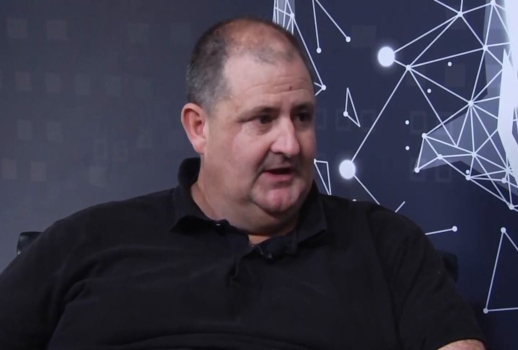Grahame Grieve, FHIR (Fast Healthcare Interoperability Resources) Expert To Speak At Upcoming HIMSS AsiaPAc 19 Conference In Bangkok
Source: Healthcare IT News Sep 30, 2019 6 years, 2 months, 1 week, 6 days, 16 hours, 50 minutes ago
Grahame Grieve is FHIR Product Director at HL7 International and is often regarded as the as the ‘Founder of FHIR’. A seasoned healthcare interoperability consultant, he has a background in laboratory medicine, software vendor development, clinical research, open source development and has also conceived, developed and sold interoperability and clinical document solutions and products in the Global markets. He expounds a bit about FHIR below:

Grahame Grieve (Photo Credit: Healthcare It News)
Fast Healthcare Interoperability Resources (FHIR ) has two aspects ,it’s a technical standard, and it’s also a community. The “FHIR Product” is really both parts, and as the product director, Grieve’s role is to grow the community, manage HL7’s provision of processes that the community can follow so that it can produce technical agreements consistently, and then to integrate that growth into HL7’s business so that HL7 can flourish as the best host for the technical standard ,which includes meeting its formal obligations as a standards organization.
Traditionally, healthcare integration within institutions has focused on a push-based messaging model, using mainly HL7, along with messaging routing and transformation services. Then a new model arose for cross-enterprise integration based on a common repository using documents (XDS/CDA). Unfortunately, these were 2 separate frameworks.
These days, indiciduals are increasingly looking for integration ie a single framework using a combination of push, pull and subscription so that institutions and regions/countries can manage their data with much more flexibility, and build more integrated workflows. All the nodes in that framework should link up with both messaging and repositories as well integration spans over time and place.
In terms of Asia Pacific sector, a combination of factors has generally meant that Asia Pacific have been followers in terms of data integration, with adoption taking longer. This is both a risk and an opportunity, a risk that business manages (conservative everywhere) won’t take the risk to try building better workflows, but also an opportunity that because there’s less prior investment, the fallacy of sunk cost is less of a problem. But on the whole it seems premature to me to talk about general trends in such a wide area with great variation in culture and funding models.
FHIR is a community and technical standard founded on the basis that openness , in both the standards process, and the health data management process, allows for great new possibilities that couldn’t arise in a closed system, and that those possibilities can transform health outcomes.FHIR is the web, for healthcare. All the things that the web has meant in other industries – that can happen in healthcare. FHIR is a small part of the overall picture , technical standards are only useful if they are used, and that’s business/cultural/governance decision. There are many problems in those areas and these are big bad problems.
As a standard, FHIR is maturing; increasingly the standard is stable and becoming ready for large scale adoption. At a technical level, our work is mainly around building out the eco-system to allow things like large scale data extraction for analysis and research, and stabilizing the clinical summary content.
In terms of community, the
set of participants is expanding quickly and we are focusing on how to scale our community processes, and collaborate much more directly with key partners such as HIMSS and IHE (we’ve collaborated with them for years, but now we need a much deeper partnership).
The most typical question I get is ‘when will FHIR be widely deployed’. And I don’t actually know the answer to that; obviously, it will grow, but in many/most countries, how quickly that happens actually depends on key decisions made by very few people for political or business reasons, and so it’s very hard to predict how far it will go in that timeframe. I’m personally far more interested in how we as a community will come to understand that Clinical Interoperability (the ability to switch patients, teams, and algorithms/AI between different care providers) is not an IT/IM problem, but a clinical practice problem. It seems to me that change will be driven by business and wider cultural considerations and that sponsors of the changes (governments/businesses) will assume Clinical Interoperability exists. The fact that it doesn’t will prove expensive, but I wonder whether we’ll learn the right lessons.
At HIMSS AsiaPac19, Mr. Grieve will have a speaking session titled “FHIR Can Really Make a Difference”. He will also be conducting a FHIR Workshop, and these all focus on healthcare interoperability and how this will bring value and drive the future of healthcare.
